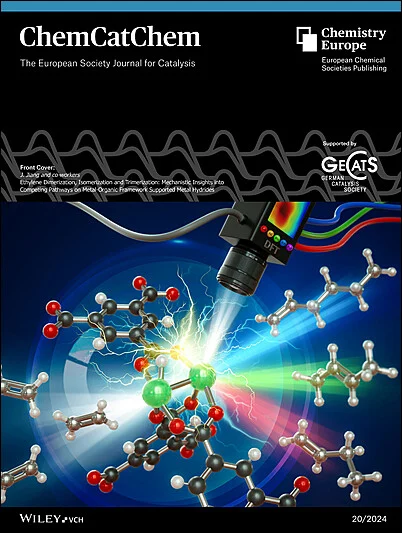Valorization of Glycerol to Glycerol Carbonate and Glycidol by Different Dialkyl Carbonates Utilizing Tricalcium Aluminate Hexahydrate as Transesterification Catalyst
IF 3.8
3区 化学
Q2 CHEMISTRY, PHYSICAL
引用次数: 0
Abstract
Herein, we report a base‐catalyzed transesterification reaction of glycerol, a waste product of the biodiesel industry, with various dialkyl carbonates, which act both as reactants and solvents, to convert glycerol carbonate into an industrially useful molecular building block. The catalyst, being used for the first time, is also a waste product from industry, present in bauxite residues and in the Portland cement, simply known as tricalcium aluminate. Despite being well‐known and readily available, this solid is only extremely poorly researched catalyst, nevertheless, using dimethyl and diethyl carbonate, glycerol conversion rates >80% and glycerol carbonate yields >60% could be achieved in just 1 hour (under air atmosphere, and reflux). In a comparison of the performance with other catalysts commonly researched today, as well as with other components of red mud and cements, the results showed that tricalcium aluminate is excellent, cheap and largely environmentally friendly material for this purpose. Reusability studies of the catalysts have also shown that they provide high conversion and product yields even after repeated use, although different material characterization techniques showed intense glycerol‐catalyst surface interaction and intermediate product formation, the deactivating side effects of which could be avoided by catalyst regeneration steps.利用六水铝酸三铵作为酯交换催化剂,通过不同的二烷基碳酸盐将甘油有效化为碳酸甘油酯和缩水甘油
在此,我们报告了一种碱催化的酯交换反应,即生物柴油工业的废品甘油与各种二烷基碳酸盐(既是反应物又是溶剂)发生酯交换反应,将碳酸甘油酯转化为工业上有用的分子结构块。首次使用的催化剂也是一种工业废品,存在于铝土矿残渣和波特兰水泥中,简称为铝酸三钙。然而,使用碳酸二甲酯和碳酸二乙酯,只需 1 小时(在空气和回流条件下)就能实现 80% 的甘油转化率和 60% 的碳酸甘油酯产量。通过与目前研究的其他催化剂以及赤泥和水泥中的其他成分进行性能比较,结果表明铝酸三钙是一种性能优良、成本低廉且基本环保的催化剂材料。催化剂的可重复使用性研究还表明,尽管不同的材料表征技术显示出甘油与催化剂表面的强烈相互作用以及中间产物的形成,但催化剂重复使用后仍能提供较高的转化率和产品产量,而催化剂失活的副作用可以通过催化剂再生步骤来避免。
本文章由计算机程序翻译,如有差异,请以英文原文为准。
求助全文
约1分钟内获得全文
求助全文
来源期刊

ChemCatChem
化学-物理化学
CiteScore
8.10
自引率
4.40%
发文量
511
审稿时长
1.3 months
期刊介绍:
With an impact factor of 4.495 (2018), ChemCatChem is one of the premier journals in the field of catalysis. The journal provides primary research papers and critical secondary information on heterogeneous, homogeneous and bio- and nanocatalysis. The journal is well placed to strengthen cross-communication within between these communities. Its authors and readers come from academia, the chemical industry, and government laboratories across the world. It is published on behalf of Chemistry Europe, an association of 16 European chemical societies, and is supported by the German Catalysis Society.
 求助内容:
求助内容: 应助结果提醒方式:
应助结果提醒方式:


